What is a hot runner system?
Hot runner systems are also called hot manifold systems or runner-less molding.
The plastic inside the mold runner that has not yet been injected into the cavity will remain molten until the next part is fulfilled.
There didn’t have gate scrap and no need to wait for the runners’ plastic to cool down, thus saving material and increasing productivity.
insulated hot runner mold and heated runners mold
Whether the hot runner inside the mold is equipped with a coil heater, the mold can be divided into insulated hot runner mold and heated runner mold.
insulated hot runner mold
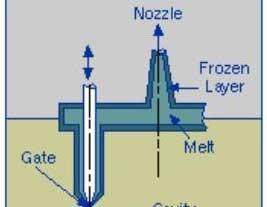
A mold with an insulated runner will not be equipped with a heating unit; it relies on insulation to keep the plastic in the runner molten.
This type of mold will design the runner of the pouring system to be quite thick, and the plastic touching the wall of the runner will suspend and form an adiabatic layer, which, together with the heat from each shot of molten plastic, is sufficient to maintain the smooth flow of molten plastic.
Because there are many disadvantages of insulated runner molds, especially the thick runner occupying a lot of internal space, which cannot take advantage of the multiple mold cavities of hot runner molds, this technology is rarely applied at present, so this technology is not discussed in this article.
Heated runners mold
The heated runner keeps the plastic molten by heating the runner with electricity. It has both internally heated and externally heated designs.
internally heated
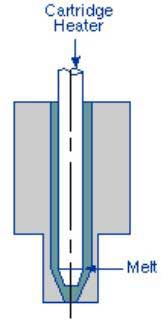
The internal cartridge heater heats the plastic and provides a circular flow path.
externally heated
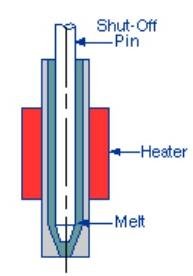
Heating coils surround the runner’s outside to keep the plastic inside the runner in a high-temperature molten state.
Full hot runner is also called hot valve runner because it adopts a needle valve hot nozzle. It features a hot nozzle that injects molten plastic directly into the cavity.
Full hot runner
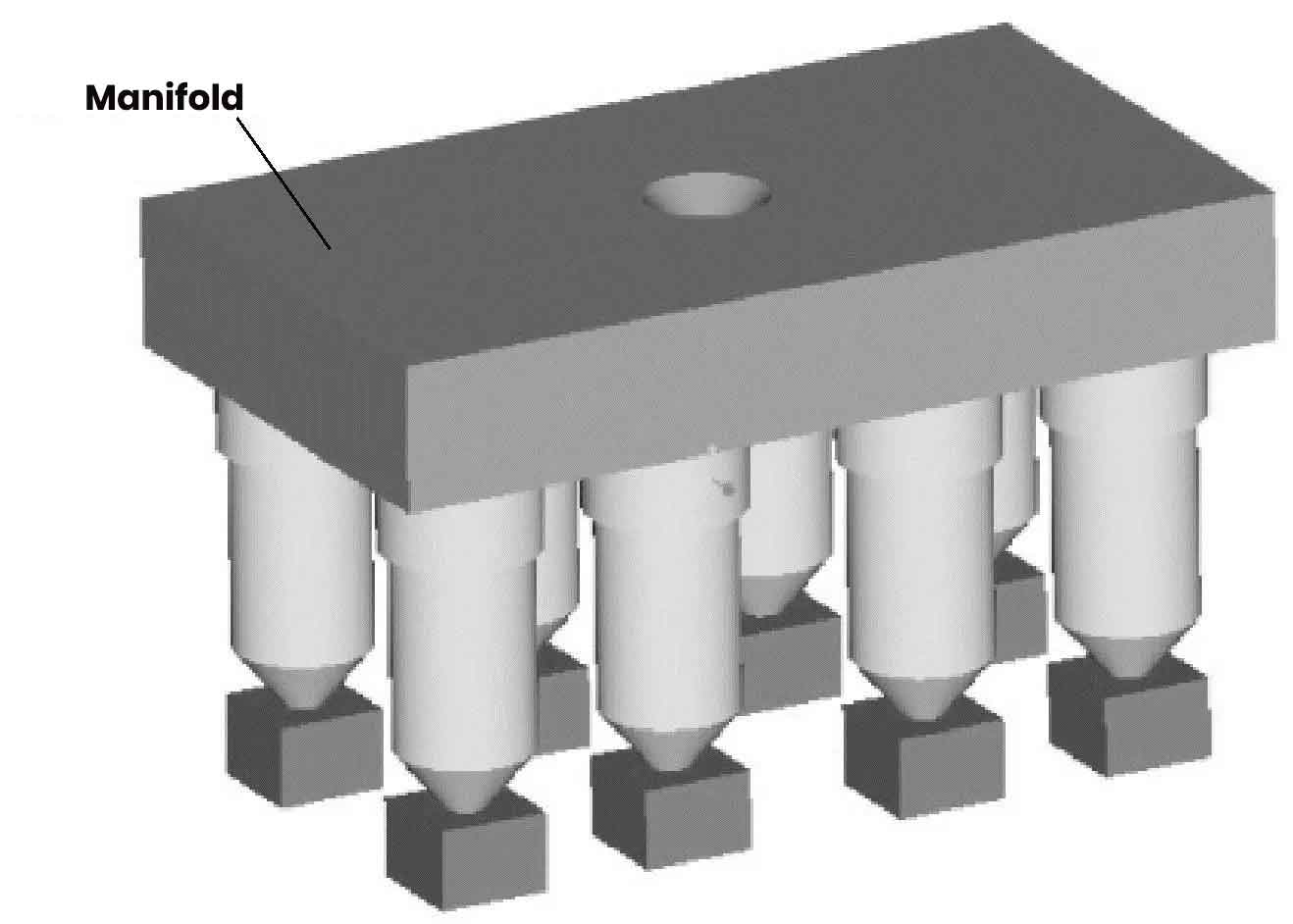
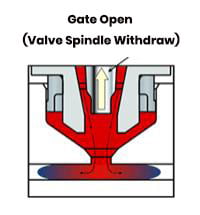

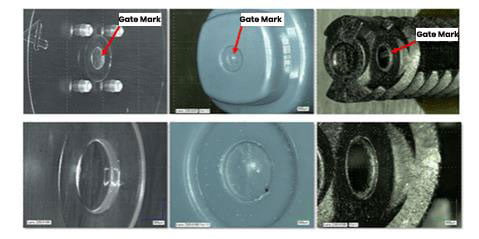
The advantages of a fully hot runner:
Ensuring the best injection molding quality.
Each cavity can be filled accurately by temperature control of different nozzles for each cavity. Uniform temperature, pressure, and density in each cavity;
Smaller injection pressure and shorter molding time result in less stress on the molded part, resulting in better product quality.
The advantages are more obvious for transparent, thin, and large parts.
Can produce Larger parts with smaller injection molding machine models.
The pressure loss of molten plastic in the runner is less, and it is easy to fill the cavity and make up the shrinkage, which can avoid defects such as depression, shrinkage, and deformation of plastic parts.
High-quality and efficient production
The fully hot runner does not produce runner scrap, eliminating the time for cooling, solidifying, dropping and taking out; eliminating the processes of cutting out the gate, trimming the product, and crushing the runner scrap;
making the injection molding process fully automated saves workforce and material resources and greatly improves productivity.
Energy saving
The melt does not need to pass through the main flow channel and branch runners, so the production process can be in low pressure and low mold temperature condition, reducing energy consumption and carbon emissions.
The disadvantages of a fully hot runner:
- The complex electro-thermal structure of the hot runner system and the high-temperature working environment often cause system failure and lead to stoppages in midway for maintenance, which affects productivity.
- With the increase of injection pressure of the direct gate nozzle, the residual internal stress around the gate also increases, which increases the rate of defective the product;
- The entire system is complex and expensive ;
- High-cost resins such as PEEK, LCP, PMMA, and PPS are unsuited for the full hot runner.
Semi hot runner
The semi-hot runner also calls open hot runner and mini-runner.
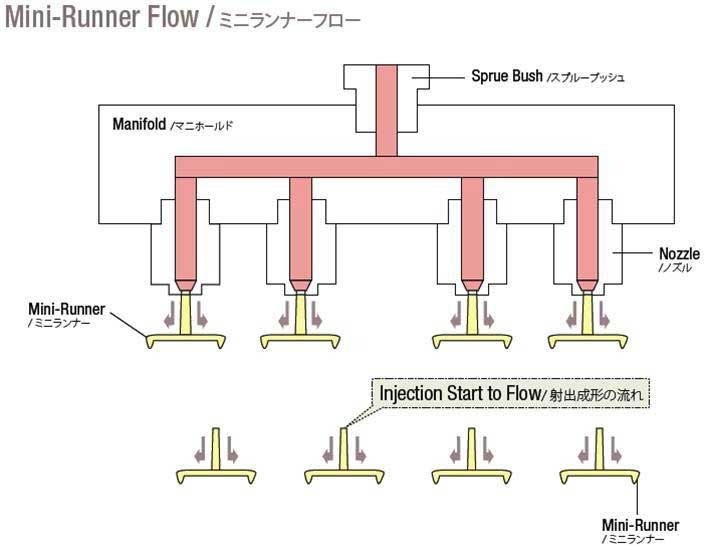
The semi-hot runner is optimized from the full hot runner with a continuous heating system that keeps the runner inside the mold at a high temperature (Figure above, red part), and the tiny runner (Figure above, yellow part) is connected to the gate and the hot nozzle.
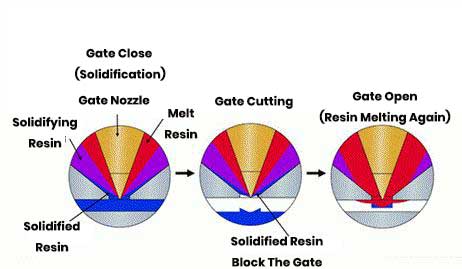
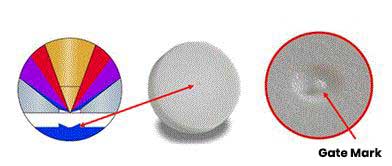
The hot nozzle of the semi-hot runner touches the tiny runner and does not directly touch the product surface, so an open hot nozzle is used. Compared with needle valve hot nozzle, it has a simpler structure, stable performance, lower failure rate, and more importantly, it is not easy to block.
Features of semi-hot runner
- excellent plastic flow compared to valve gates hot runner with pins and springs;
- mini-runner can completely avoid the problems of pulling, leakage, gate clogging, etc., that exist in general hot runner systems.
- This system is particularly suitable for multi-cavity injection molding, especially since gate balance is not a concern.
- This system adopts an integral heating method; only one set of heating device and a single zone thermostat is needed, which is easy to control the temperature.
Advantages of mini hot runner
- The semi-hot runner replaces most of the main sprue with a hot system, leaving only a tiny sprue, which can reduce the sprue occupation space by 50%-80% compared to the cold runner system, so the number of cavities in the mold can be increased by more than four times;
- its simple structure and low failure rate of the hot nozzle, so the whole system is very stable
- it has good physical properties of the injection molded product and can reduce WELD-LINE and other injection molding defect problems
- Its mold-making cost is 1/3 lower than the cost of full hot runner molds, and it has advantages in maintenance and usage cost.
Applications of semi-hot runner
The semi-hot runner is suitable for all engineering and general plastics, including PEEK, LCP, PPS, POM, PMMA, TPR/TPE, PE/LDPE/HDPE, ABS, PSU, PC, PET, PVC, PBT, PA6/PA66/PA1010, PBI, PEI, PU/TPU, PP, PPO, etc. It can also apply materials containing GF glass fibers due to the excellent stability performance of the thermal nozzle.
Hot runner VS cold runner
There is no absolute answer to this question; it needs to be considered from the perspective of your project oversight. We will provide some reference factors to help you find a suitable answer.
Requirements for production efficiency
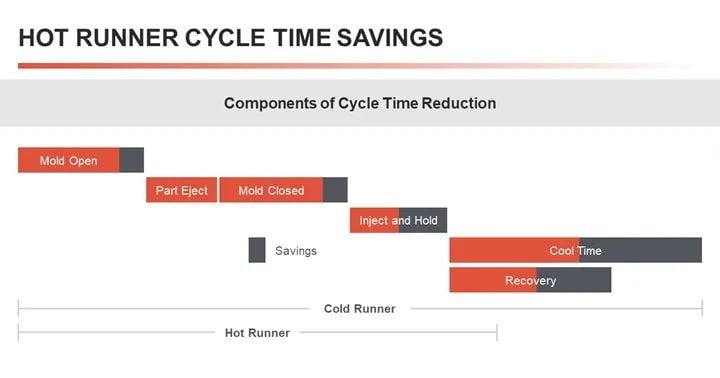
Has your product been sold on a large scale through the market test? If so, be sure to use the hot runners’ solution; its advantages of multiple cavities, saving raw materials, and shorter production cycle will pay you a high reward in the long term.
Suppose your product is still in the start-up phase, with small production volumes and an unstable production schedule. I recommend the cold runner solution. This is because the cold runners’ solution has a shorter and more flexible start-up turnaround time.
The chart below shows a typical injection molding cycle and a breakdown of its steps, comparing the cycle time required for a cold runner mold with that required for a hot runner mold.
From the above chart, it is obvious that the cycle time of hot runner molds will be shortened by about 20% than cold runner molds under the same conditions.
Initial investment cost
The production cost of the mold with hot runner solution is much higher than the mold with cold runner solution, especially for the mold with fewer cavities.
Technical factors
Hot runner molds have low requirements on the injection molding machine in terms of opening stroke and clamping force;
Hot runner gates allow repositioning to any position on the part, thus eliminating runner trimming, secondary operations and their inconsistencies. This will bring greater design freedom for products with a precision request.
Hot runner solution molds require more consideration in mold trial and material adaptation, and the cost of trial and error is higher than cold runner solution molds.
This article gives an overview of the hot runner, the hot runner does not exist in isolation in the feed system but is also closely related to the injection molding gate; here, we prepare the type of gate and the scope of application; welcome to check further.
